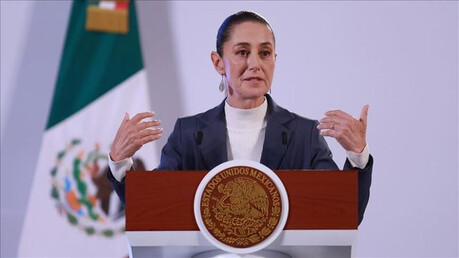
The tariffs announced by the Donald Trump administration will primarily affect Mexico, Canada, China, and the United States itself, but are also on track to negatively impact global growth, warned the International Monetary Fund (IMF).
Based on the announcement of reciprocal tariffs in what Trump called "Liberation Day," the organization reduced its growth forecast for the global economy by 0.3 percentage points, although it ruled out the possibility of a recession.
Instead of the 3.3 percent growth projected for both years, published by the organization just in January, the IMF now forecasts an advance of 2.8 percent in 2025 and 3 percent in 2026.
"Tariffs have a large negative impact on global activity. The effect is largest for Canada and Mexico, China, and the United States," the organization noted as part of its World Economic Outlook (WEO).
The IMF made these projections based on a scenario of reciprocal tariffs for all countries, before the US president announced a 90-day pause on April 9th in the imposition of tariffs for most economies, except China.
However, the organization believes that this pause, "even if extended indefinitely, does not substantially alter the global outlook compared to the baseline forecast."
Self-Inflicted Wound
The United States itself experienced a drop in its growth forecast for this year and the next. For 2025, the IMF projects growth of 1.8 percent, 0.9 percentage points lower than published in January, and almost half of this cut is entirely attributable to the tariffs.
China's growth is projected at 4 percent, 0.6 percentage points lower than anticipated three months prior. Meanwhile, in the European Union, "subject to relatively lower effective tariffs," the decrease has been only 0.2 percentage points, to 0.8 percent.
The organization explained that for trading partners, tariffs are primarily a negative demand shock, which deters foreign consumers from their products, although some countries may benefit from trade diversion.
Tariffs at a Century High
The IMF showed that although many of the tariff increases are on hold, the combination of measures and countermeasures has raised rates to their highest level in a century. The effective tariff rate of the United States alone exceeded the levels reached during the Great Depression. And in general, this contributes to trade growth of only 1.7 percent this year.
"Unlike the last century, the global economy is now characterized by a high degree of economic and financial integration, with supply chains and financial flows traversing the world, whose potential disintegration could constitute a significant source of economic disruption," warned Pierre-Olivier Gourinchas, the IMF's economic counselor.
The organization also pointed out that the effect of tariffs on exchange rates is complex. While the United States could see its currency appreciate as in previous episodes, increased political uncertainty, lower growth prospects, and an adjustment in global demand for dollar assets—which so far has been orderly—could weigh on the US currency, as seen since the trade measures were announced.
For the moment, "in the medium term, the dollar could depreciate in real terms if tariffs translate into lower productivity," the IMF noted.
While the organization believes that eliminating tariffs from the global landscape could boost global growth, "this requires policymakers to think far beyond the reductionist perspective of offsetting transfers between 'winners' and 'losers' (...) regrettably, not enough has been done, leading many to adopt a zero-sum view, according to which the gains of some are only obtained at the expense of others."
[Copyright (c) Global Economic Times. All Rights Reserved.]





























